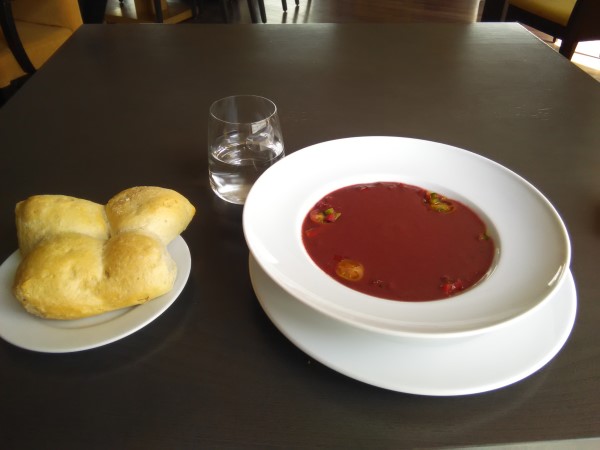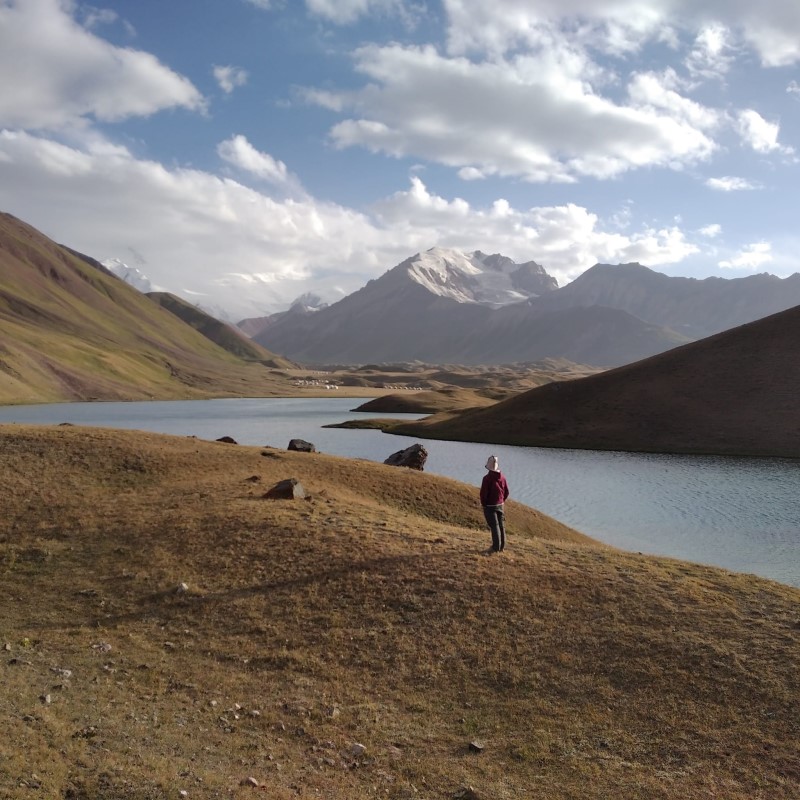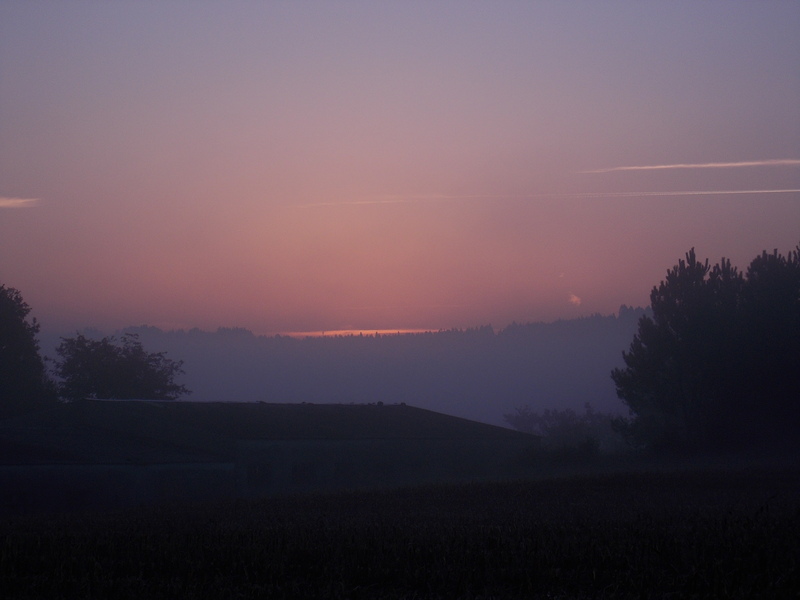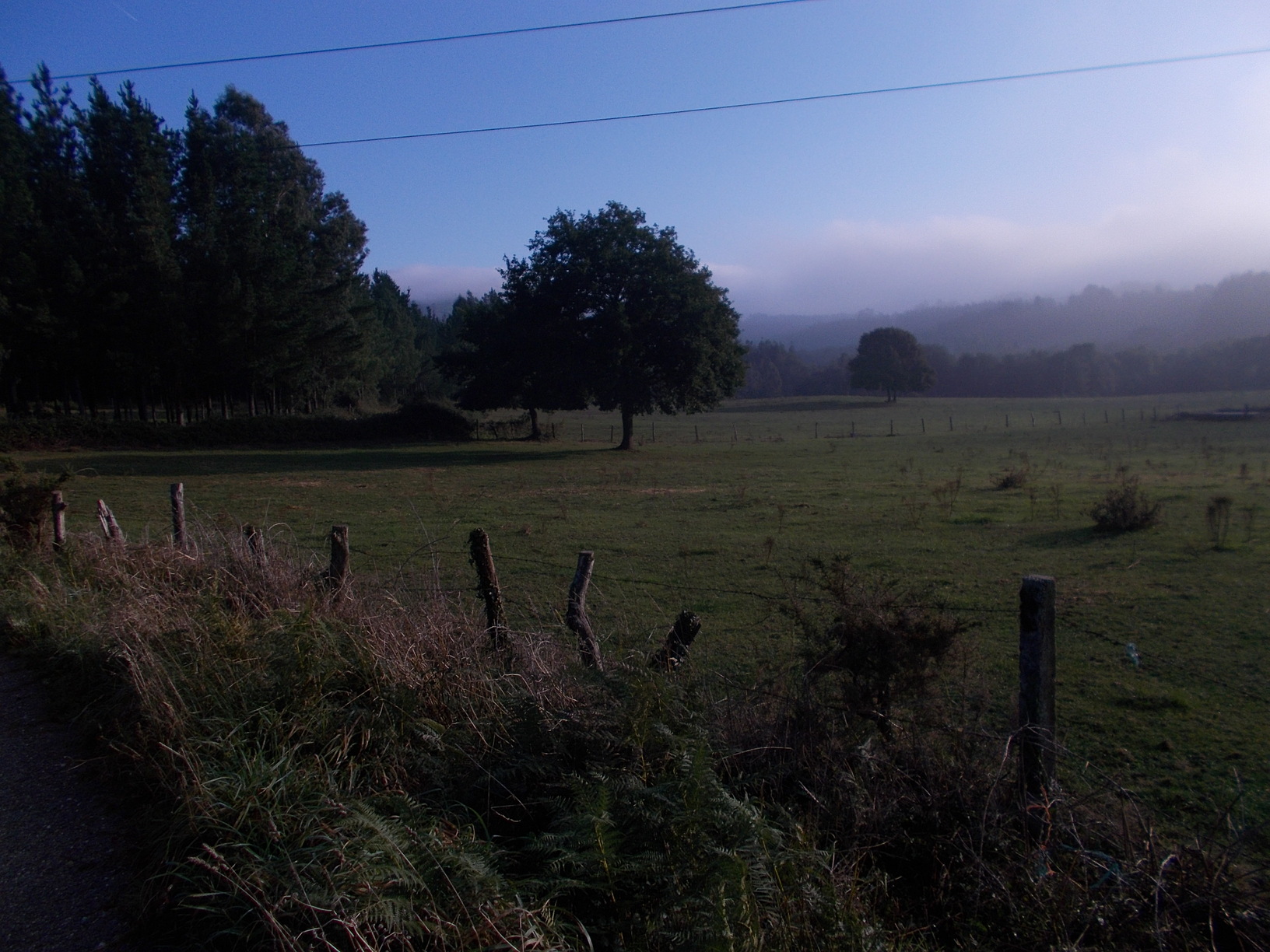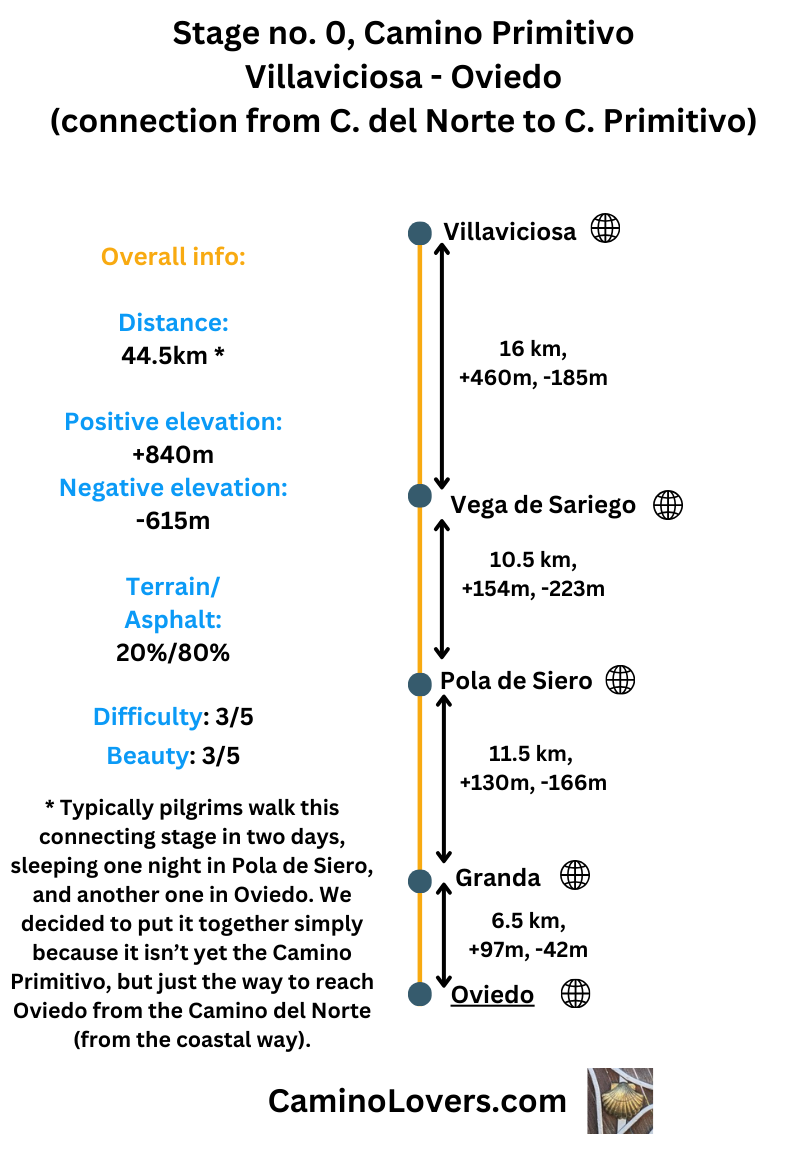
Table of Contents
Basic Details
- Starting point: Villaviciosa, a town of roughly 15,000 inhabitants, on Camino del Norte. Roughly 2 kilometers after the town you reach a point where you can either turn left, to Camino Primitivo, or continue straight, on the Camino del Norte. You will find in the town two pilgrim hostels and plenty of other accommodation options. And all services for pilgrims.
- Ending point: Oviedo, the capital of Asturias and the official starting point of Camino Primitivo. You can get your credential here, and count with all services for pilgrims, including one pilgrim albergue.
- Availability of alternative routes: There are a few regional marked trails that can take you a bit more out of the paved roads. But I do not think they are necessarily worth taking. You will have nicer sections on the days in front of you. However, there’s one interesting detour on paved roads, leading to a monastery, called Monasterio de Valdedios, located here. The archbishopric of Oviedo runs a nice albergue here, in the premises of the monastery. They have over 30 beds and it virtually never gets full, considering the location and everything. The turn towards the monastery is waymarked, but I also mapped for you the entire detour (leaving the Camino and later connecting to it) here. It adds roughly 1 kilometer to the overall distance of the stage. While there are many more famous, bigger, and more decorated monasteries in Spain, some of them even on the Caminos, the detour to the Monastery of Valdedios is definitely worth making for anyone doing the Camino from religious motives, or simply anyone who loves visiting monasteries.
- Distance: Official camino route: 44.5km (download GPS here). * Pilgrims typically walk this stage in two days, staying one day in Pola de Siero, km 26.
- Link to online map: Official camino route: here.
- Elevation difference: +840m, -615m (actually very little considering the distance).
- Difficulty score: 3/5 if walked in two days, 5/5 if done in one day.
- Beauty score: 3/5.
- Terrain/asphalt: 20%/80%. Except for the last few kilometers on the outskirts of Oviedo, Camino follows little country roads with minimum of traffic.
Elevation profile for the route

– The initial climb is quite hard. Leaving the coast and climbing gradually for the first 6 kilometers, you reach the steep section between km 7 and 9, climbing almost 300 vertical meters on 2 kilometers. After that, however, there is barely any elevation and the stage is pretty flat all the way to Oviedo…
Advanced info about the stage
- Trail marking: A bit tricky on some sections. You should keep on your mind that this part of the walk belongs neither to Camino del Norte nor to Camino Primitivo, but it is a connecting stage of the two instead. Hence sometimes it is questionable who is responsible for making sure the yellow arrows are in tact, and I remember a few crossroads where I had to consult maps on my phone (check best maps for the Camino to learn what application will serve you the best). You can consider downloading GPS file for this stage too, especially if you walk with some sports watch and hence can easily follow whether or not you’re on the route or not.
- Natural places worth seeing: Nothing breathtaking, certainly the nicest part is the first climb, but there are few things worth a mention, for pilgrims who aren’t in rush on their Camino:
- A cave “Cueva San Pedrin”, 800 meters detour from the Camino but you can connect back making a “triangle”. Location on Google maps here. The cave is about 50 meters long, and while the stalagmites and stalactites are relatively dry and not so developed like in some caves on the coast, it is still a nice place for a visit, for anyone who’s into caves and the natural beauty they offer. Like with many other caves in Spain, anyone can enter, and with your headlamp it isn’t really dangerous in any means.
- A walking path “Senda del Rio Nora“, following the Nora river, ideal for those who stay for the night in Pola de Siero, and want to enjoy a bit of river walk in the afternoon. Location on Google maps here. Once you join the river zone, you can walk in both directions, south or north, for a few kilometers. The walk is pretty flat, and offers some nice sections and some boring sections close to the highway.
- Historical and architectural places worth seeing:
- The monastery Monasterio de Valdedios, location on Google maps here, it is on the alternative route of the Camino today. Beautiful from both inside and outside, the nuns run an albergue there too (with communal dinner). If you only pass by during the day, it is open every day except of Monday, from 10:30am to 1:30pm. Special price for pilgrims 4 euros (normal price is 6 euros).
- A puppet museum & theater, “Museo el Taller de Titeres”, 2 kilometers outside of Pola & the Camino, ideal for an afternoon activity for people who stay in Pola and do not mind a little extra walk. Location on Google maps here. Definitely an interesting and one of a kind place to visit on the Camino. Opening hours change during the year, for more information call them or visit the website of the institution.
- Old town of Oviedo, with Cathedral of San Salvador of Oviedo as a highlight (paid entrance). But there are plenty of historical buildings and a lot to observe for any architecture lover in the old town Oviedo. Not worth an extra day in the city in my view, but for one afternoon it is an excellent place to visit for any pilgrim.
- Camping/bivouac options on this stage: Not ideal but doable. While there aren’t any official camping zones on the route today or close to it (paid or unpaid), you can locate some decent spots for wild camping, especially in the first part of the stage, until you reach the town Pola de Siero. For example in the zone around an old semi-dilapidated chapel “Capila de la Bienvenida”, right on the Camino, exactly here. While the terrain isn’t super flat, you can find some flat spots, there are some small trails you can follow to find a spot that’s nicely hidden, and it also isn’t far away from Pola, so in the morning you can walk down there for breakfast :). From Pola onward in the direction of Oviedo, the zone is already very urban and bad for camping or bivouacking overall.
- Dog friendly score: 2/5. In overall bad for dogs… Too much asphalt walking, the second part is very urban and industrial, and there aren’t any pilgrim hostels accepting dogs in this zone. Of course, Oviedo is a big city and if your budget isn’t limited you will find some hotels that accept dogs, but there aren’t cheap and aren’t pilgrim places. If you want to do Camino Primitivo with a dog, I suggest you arriving to Oviedo by train (in Spain dogs are allowed on board of trains, but are forbidden on buses, and need to go into the luggage storage area below, which is a complete barbarity in my view–hence you should always take a train with a dog and never a bus), and start from there on the same day. All following stages are better for dogs, and you will almost always find at least one pilgrim hostel that accept pilgrims with pets.
- Special remarks: None.
My picks for accommodation on this stage
- Albergue del Monasterio de Valdediós, Valdedios, km 10. Location and reviews on Google maps here. A beautiful albergue in a monastic complex of Valdedios, slight detour of the camino, well marked. Run by nuns, with communal dinner and breakfast. Price 15-25 euro/night (depending of the size of the room), dinner is 10 euro extra. 32 beds in 6 rooms, plus some private rooms. Very beautiful and peaceful location, with great hospitality. Food is pretty decent as well (there isn’t really any kitchen or restaurants, so you have to rely on it, unless you bring some baguette). Recommended way of booking: phone call, or WhatsApp, +34 626 734 812, or+34 985 555 381m check-in only from 15:30, so that’s something to keep on your mind should you walk here from Villaviciosa.
- Albergue de peregrinos de Pola de Siero, Pola de Siero, km 26.5. A nice municipal albergue run by voluntary hospitaleros (can be a hit and miss sometimes :)). 18 beds in 2 rooms, 10 euro/night (although some platforms label it as donation-based, it isn’t really the case–or at least not in 2025). Location and reviews on Google maps here. Nice garden, microwave and fridge (but no real kitchen), but it isn’t a bi issue since there are over 10 restaurants in town and a few supermarkets too. Check-in from 13:30, doesn’t accept reservations, but in my experience it doesn’t fill up, almost ever.
- Albergue La Hospedería Oviedo, Oviedo (km 44.5). Normally I’d recommend a municipal albergue in Oviedo, but there were several reports of bed bugs in 2025 in the municipal albergue, so I’d go with this one instead. It is a new albergue in a historical building, right in the very city center of Oviedo. The place is very clean and the host is super nice. 20-25 euro/night (depending on the month of the year), 10 beds in 2 rooms. Check-in from noon (great if you want to arrive early to Oviedo to explore it). Recommended way of making a reservation: Directly on Booking.com, or you can try calling +34 630 806 587. Location on Google maps here.
- Green hostel Oviedo, Oviedo (km 44.5). Ideal if you’re looking for a bit of privacy, and at the same time for affordable pilgrim option. You can get a double room here for 50 euro, and single for as little as 22 euro in low season, though in high season prices can get up. Superbly clean and centrally located, with very nice terrace and buffet breakfast with a nice variety for Spain. Check-in from 3:30pm, recommended way of reservation: Direction on Booking.com.
Pictures from the stage
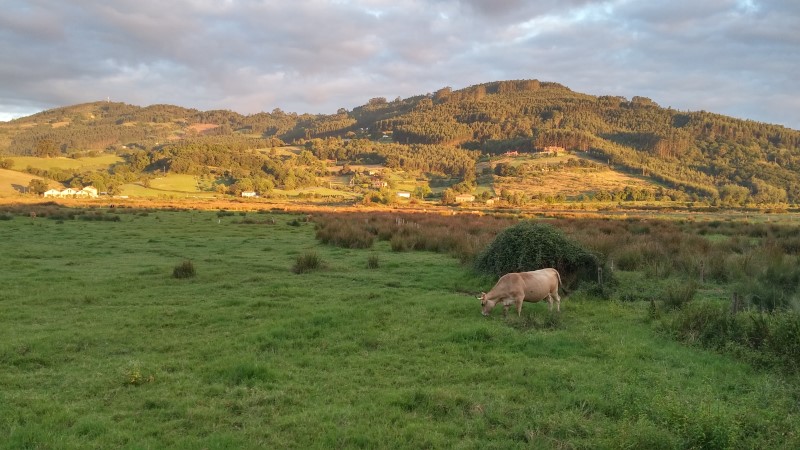 – Green beauty of the coastal zone near Villaviciosa
– Green beauty of the coastal zone near Villaviciosa
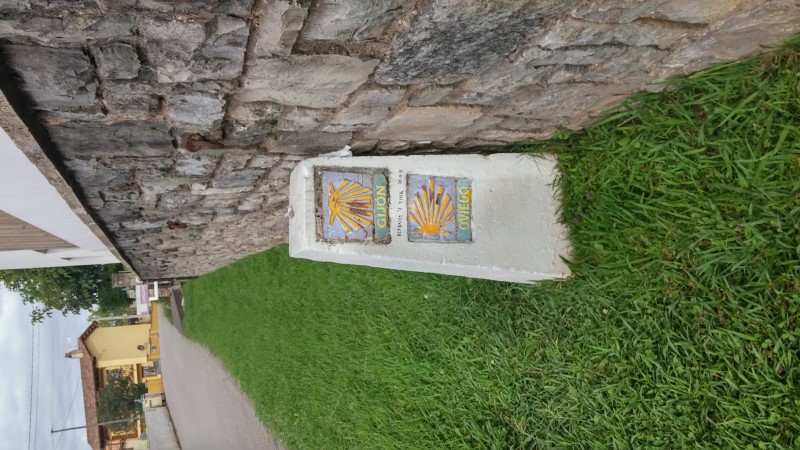 – The famous split, you turn left to go to Oviedo :).
– The famous split, you turn left to go to Oviedo :).
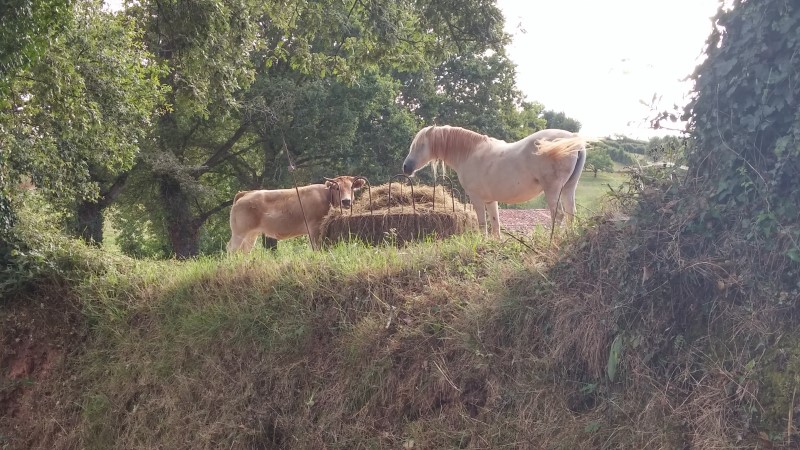 – Everyone is enjoying the wonderful weather. Cows, horses, pilgrims…
– Everyone is enjoying the wonderful weather. Cows, horses, pilgrims…
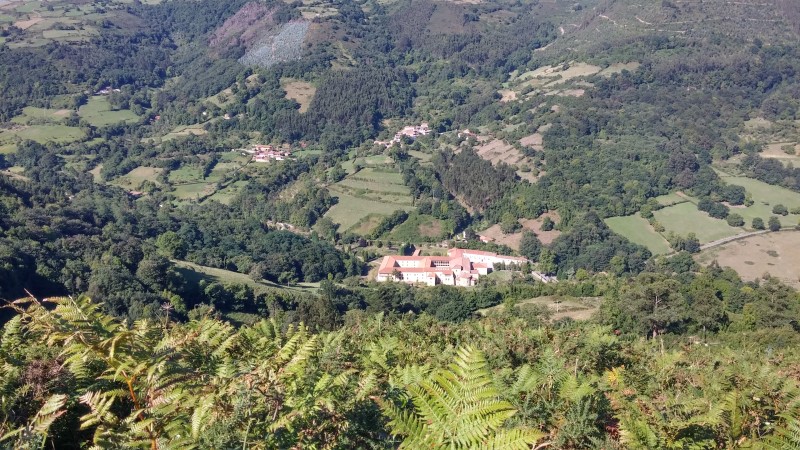 – Views from the first and only big hill of today’s stage, you can see the complex of the monastery “Monasterio de Valdedios” down below in the valley, a place that you can reach following the alternative way (see the “alternative routes availability” section at the beginning of this post for more information).
– Views from the first and only big hill of today’s stage, you can see the complex of the monastery “Monasterio de Valdedios” down below in the valley, a place that you can reach following the alternative way (see the “alternative routes availability” section at the beginning of this post for more information).
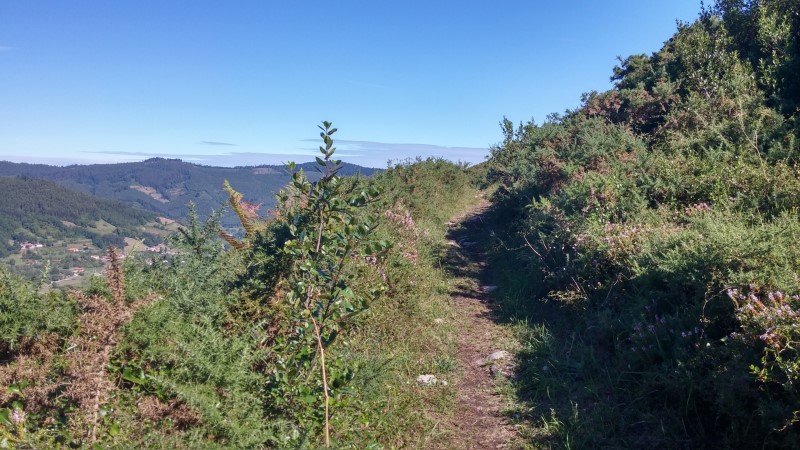 – You’ll spend 80% of time walking on paved roads today, but the few unpaved sections are really nice.
– You’ll spend 80% of time walking on paved roads today, but the few unpaved sections are really nice.
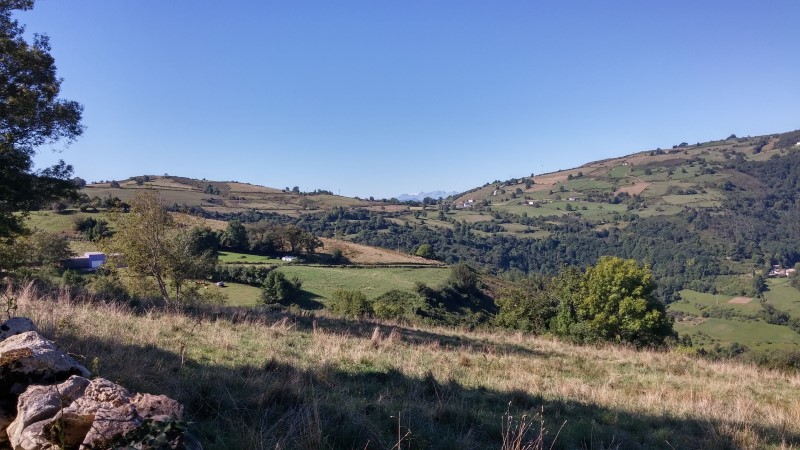 – Another view
– Another view
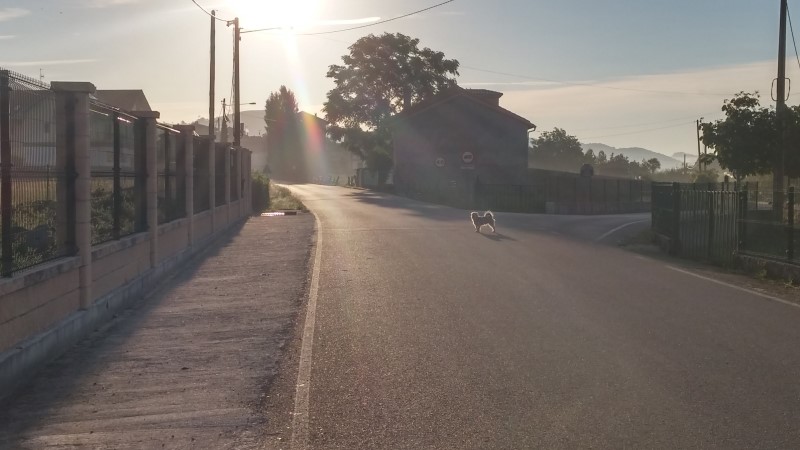 – Free roaming friendly dogs will accompany us all the way on Camino Primitivo
– Free roaming friendly dogs will accompany us all the way on Camino Primitivo
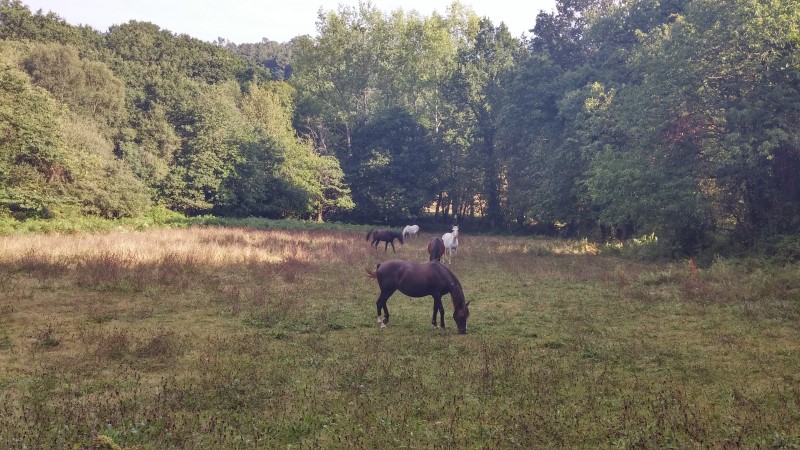 – Some horses along the way
– Some horses along the way
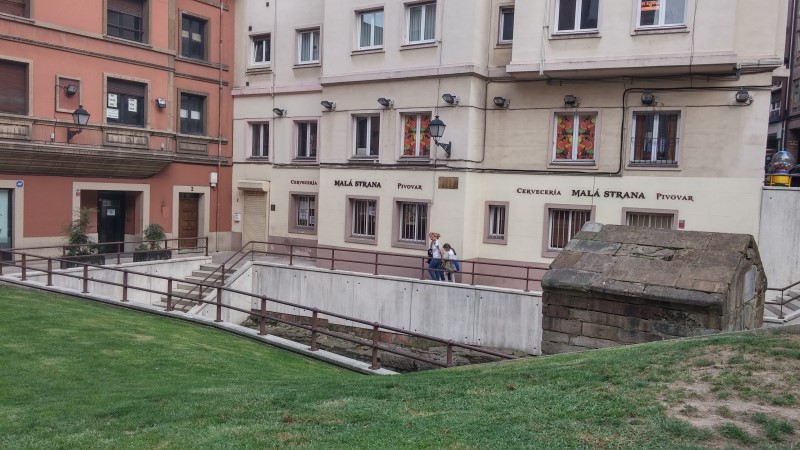 – Czech brewery in Oviedo :). I wonder what the history of this place is…
– Czech brewery in Oviedo :). I wonder what the history of this place is…
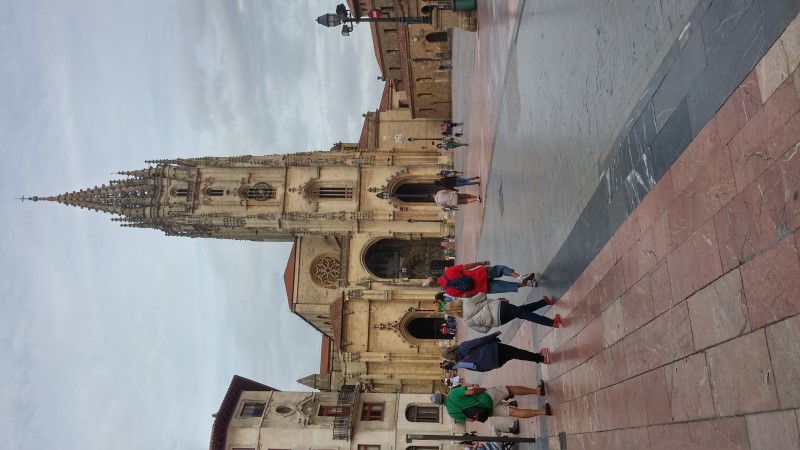 – Cathedral of Oviedo, rainy weather…
– Cathedral of Oviedo, rainy weather…
Next/Previous Stage
- Next Stage: Camino Primitivo, Stage no. 1, Oviedo – Grado.



![Ultralight Packing List for Camino de Santiago [2025 Edition]](https://caminolovers.com/wp-content/uploads/2022/03/altra-shoes-640-x-480.jpg)
